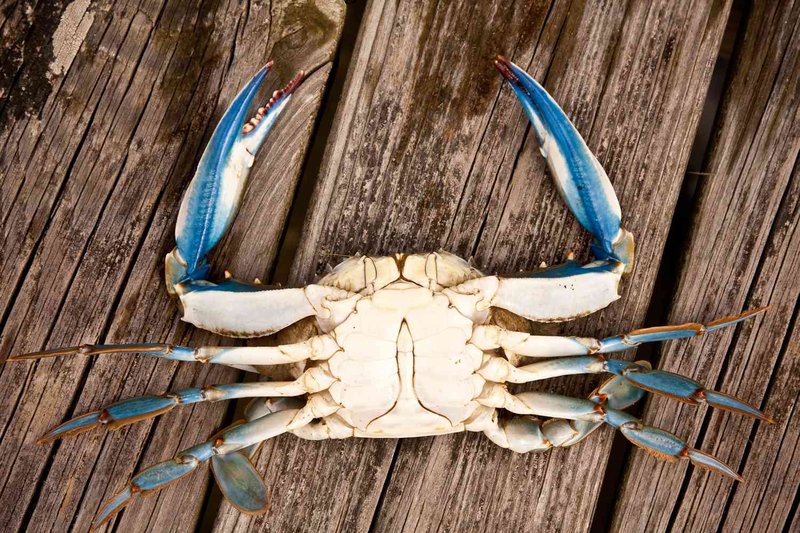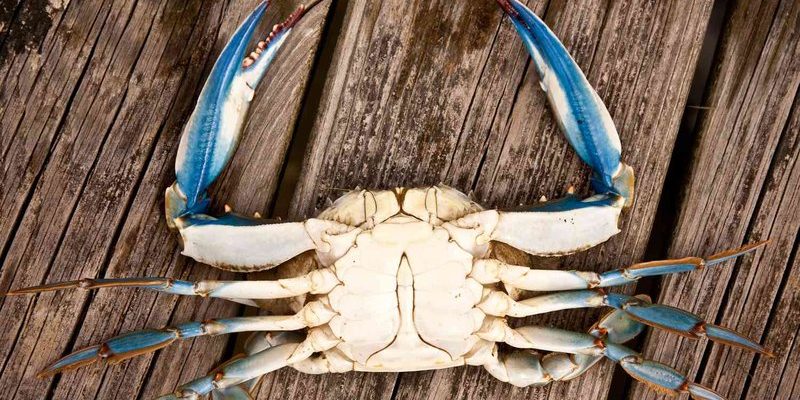
The blue crab, scientifically known as *Callinectes sapidus*, is commonly found along the Atlantic and Gulf coasts of the United States. It’s loved not just for its sweet, delicious meat but also for its ecological role in the ocean. So grab a cup of coffee and let’s dive into the world of blue crabs!
1. Unique Coloration
The blue crab’s striking coloration is perhaps its most notable feature. The males boast bright blue claws that catch the eye instantly, while females can be identified by their reddish-orange tips. This vibrant palette isn’t just for show; it plays a crucial role in mating. Males display their colorful claws to attract females, showcasing their health and vitality.
Interestingly, their color can change based on their environment and stress levels. If you’ve ever seen a blue crab that looks more muted, it could be due to pollution or other factors affecting their habitat. It’s a reminder of how interconnected nature is, and how environmental changes can affect even the most colorful creatures.
2. A Key Player in the Ecosystem
Blue crabs are not just pretty faces in our oceans; they serve a vital role in the marine ecosystem. As omnivores, they munch on various foods—everything from algae and plants to small fish and other crustaceans. This varied diet helps keep the underwater world balanced.
By eating dead or decaying matter, blue crabs also contribute to the health of the ocean floor. They help recycle nutrients back into the ecosystem, supporting the growth of plants and other marine animals. So, when you enjoy a blue crab meal, remember that these little guys work hard to keep the ocean thriving.
3. Migration Patterns
Blue crabs are known for their migratory behavior. They often move from estuaries into the open ocean as they grow. These movements usually take place in late summer or early fall when the crabs are ready to reproduce.
During migration, they may travel quite long distances, sometimes over 100 miles! This journey is not just about finding food; it’s also about finding suitable breeding grounds. Next time you see a blue crab, think about the adventurous journey it might have taken to get there.
4. Crazy Lifespan and Growth Cycle
Wondering how long blue crabs live? They typically live up to 3 to 4 years in the wild, but their life cycle is fascinating. They start as tiny larvae, drifting in the ocean before settling into the bays and estuaries.
As they grow, blue crabs go through a process called molting, where they shed their old shells to make way for new, larger ones. This can happen several times a year, especially in warmer waters. The growth cycle is crucial for their survival—after all, bigger shells mean they can defend against predators better. So, every time you see a blue crab, you’re looking at a little survivor!
5. Blue Crabs and Their Predators
Like many creatures in the wild, blue crabs have their share of enemies. Predators include larger fish, birds, and even other crabs. This constant threat has led to some interesting adaptations. For example, when threatened, a blue crab can quickly retreat into its shell or use its claws for defense.
Their speed and agility are remarkable. Blue crabs can move both forwards and backwards, allowing them to escape danger swiftly. They may be small, but they know how to hold their ground!
6. Importance in Culinary Culture
Blue crabs hold a special place in culinary traditions, especially along the East Coast. Many people look forward to blue crab season as a time to enjoy crab boils, crabcakes, and other delicious seafood dishes. The sweet, tender meat of blue crabs makes them a prized catch.
But there’s more to it! Blue crabs have even inspired local festivals and events where communities come together to celebrate the ocean’s bounty. If you haven’t tried blue crab on your dinner plate yet, you’re missing out on a culinary experience that captures the essence of coastal living.
7. Their Role in Commercial Fishing
Commercial fishing for blue crabs is vital to many coastal economies. Fishermen use crab pots and traps to catch these hardworking crustaceans, providing jobs and income for local communities. However, this popularity comes with its challenges.
Sustainable fishing practices are essential to ensure the blue crab population remains healthy. Overfishing can lead to significant declines in their numbers, affecting the ecosystem and the economy. Fishermen are increasingly adopting measures like catch limits and size regulations to maintain a balance between harvesting and conservation.
8. Fascinating Communication Skills
You might not think of crabs as chatty creatures, but they have their own ways of communicating! Blue crabs use a mix of chemical signals and movements to convey messages to one another. When they feel threatened, they often wave their claws or display aggressive postures to ward off rivals.
This communication is particularly important during mating seasons. Males perform elaborate dances and gestures to woo females, showcasing their strength and readiness to mate. It’s like a dance of survival and reproduction all rolled into one!
9. Their Unique Habitats
Blue crabs are mostly found in brackish waters, which are a mix of sea and freshwater. They thrive in estuaries, marshes, and bays, where they can find plenty of food. These habitats are crucial for their growth and reproduction.
However, blue crabs can also adapt to different environments. They’ve been spotted in deeper parts of the ocean and even in freshwater areas when conditions permit. This adaptability is one reason they are so successful as a species!
10. Conservation Efforts
With their ecological and economic importance, conservation efforts for blue crabs are underway. Organizations and local communities are working to protect their habitats and promote sustainable fishing practices.
By raising awareness about blue crabs and their role in the ecosystem, we can ensure future generations can enjoy these remarkable creatures. Supporting responsible fishing and habitat conservation is something we can all do to help keep blue crab populations thriving.
In conclusion, blue crabs are not just tasty seafood; they are fascinating creatures with unique behaviors and vital roles in our ecosystems. From their vibrant colors to their complex communication, there’s so much more to these crabs than meets the eye. Next time you spot one on your plate or while strolling along the beach, remember the incredible story behind these amazing animals. Let’s work together to protect their future!

